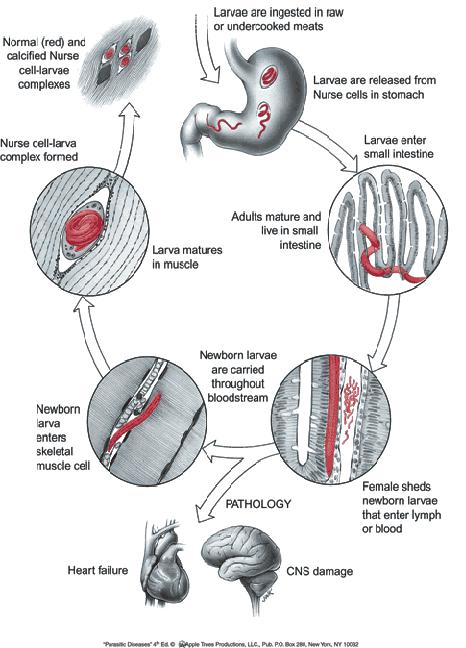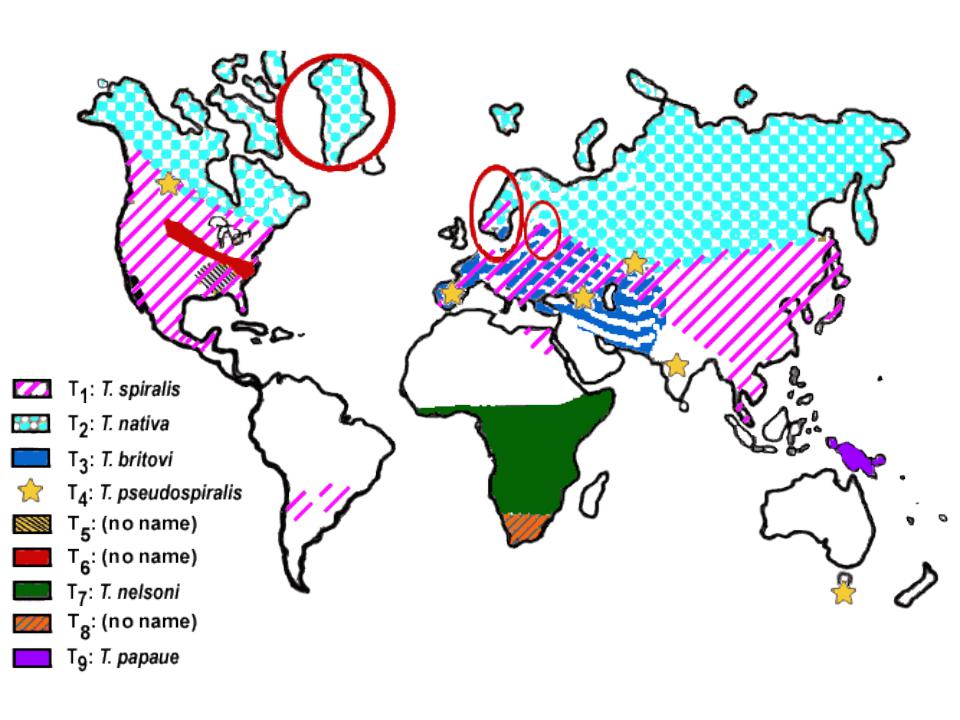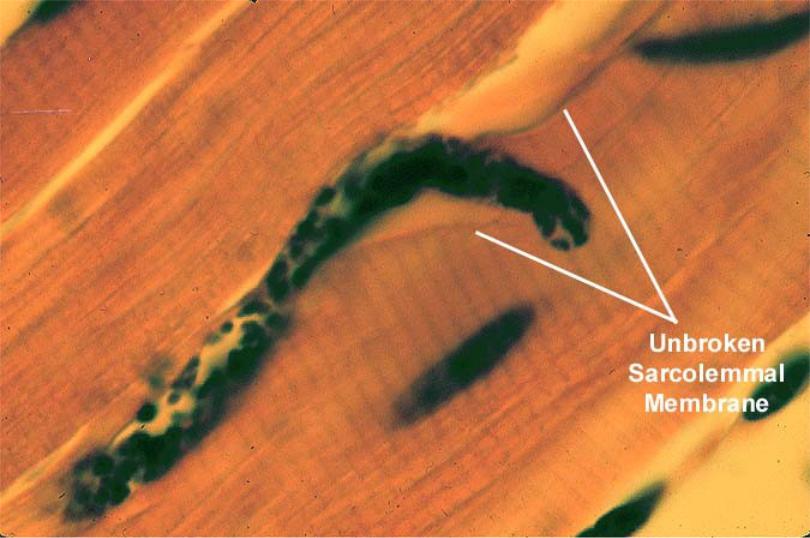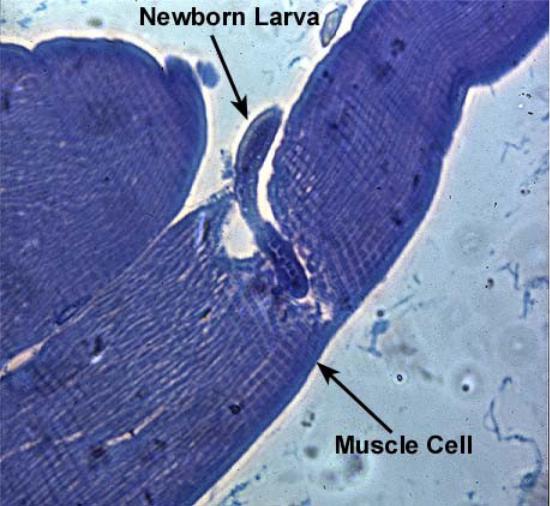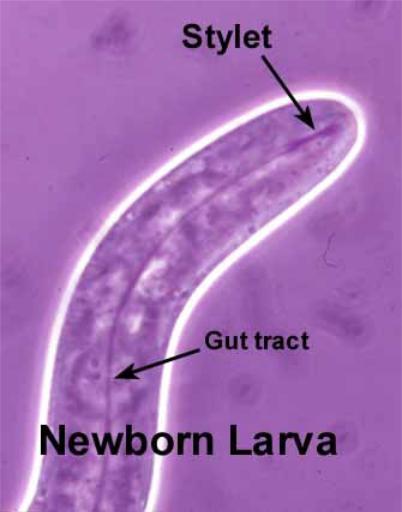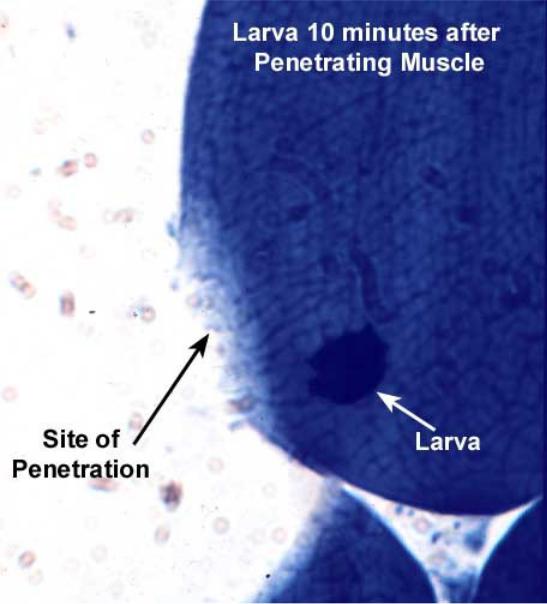
- ••Домашние и дикие свиньи
- ••The most frequently parasitized muscles are the tongue; diaphragmatic, masseteric, intercostal, laryngeal, extraocular,
- ••Intestinal infection usually causes symptoms in the first week of illness.
- ••The invasive phase corresponds to the migration of the larvae from the intestine
- ••The convalescent phase corresponds to encystment and repair. It can be present for
- •Electron micrograph of the larva 1 hour after entering the muscle cell
- •Фиброзный чехол
- •Encapsulated Trichinella spiralis larva in muscle from experimental animal (x200).
- •самец
- •самец
•Домашние и дикие свиньи
•Грызуны (крысы!)
•Птицы
•Моржи, тюлени
•Медведи
•Лошади
•Волки, кошки, лисы и др.
•The most frequently parasitized muscles are the tongue; diaphragmatic, masseteric, intercostal, laryngeal, extraocular, nuchal, intercostal, and pectoral muscles; deltoid; gluteus; biceps; and gastrocnemius.
•Death from trichinellosis usually occurs in 4-8 weeks but may occur as early as 2-3 weeks. Patients succumb to exhaustion, pneumonia, pulmonary embolism, encephalitis, or cardiac failure and/or arrhythmia.
•Intestinal infection usually causes symptoms in the first week of illness.
•Diarrhea is the most common symptom.
•Constipation, anorexia, and diffuse weakness also may occur.
•Occasionally, severe enteritis occurs due to a massive inoculum of Trichinella species.
•Symptoms typically last 2-7 days but may persist for weeks.
•With certain Trichinella species and in certain population groups and geographic regions, the disease may not progress beyond the intestinal stage.
•Nausea is reported in 15% of patients, vomiting in 3% of patients, and diarrhea in 16% of patients.
•Dyspnea may occur upon exertion.
•Abdominal discomfort and cramps may occur.
•Of patients, 20% report a macular or petechial skin rash.
•The invasive phase corresponds to the migration of the larvae from the intestine to the circulatory system and eventually to the striated muscles. It is associated with a higher rate of symptoms than the intestinal stage. Its duration varies from weeks to months.
•Severe myalgia is experienced by 89% of patients.
•The central nervous system (CNS) is involved in 10-24% of patients, with a mortality rate of 50%. Approximately 52% of patients present with headaches. Other symptoms include deafness, ocular disturbances, weakness, and monoparesis.
•Cardiac system involvement occurs during the third week of infection, with a mortality rate of 0.1%, often during the fourth to eighth week of infection. Death may result from congestive heart failure and/or arrhythmias.
•Pulmonary system involvement occurs in one third of patients, with symptoms lasting up to 5 days. Patients present with dyspnea, cough, and hoarseness.
•The convalescent phase corresponds to encystment and repair. It can be present for months to years after infection.
•The encystment of larvae can lead to cachexia, edema, and extreme dehydration.
•Usually, symptoms decrease around the second month, except in the case of infection with T pseudospiralis, which may be symptomatic for several months.
